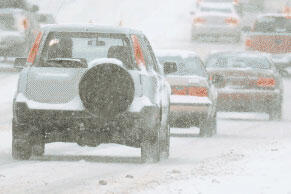Avoiding a year-end trap with employee expenses
For cars and vans there are two tax-free mileage rates. The higher is payable for the first 10,000 miles of business travel in a tax year and the lower thereafter. The trouble is, as one tax year ends and another starts there’s the risk of applying the wrong rate. What’s the problem and how can employers avoid it?

Mileage allowance
HMRC’s approved mileage allowance payments (AMAPs) for employees are relatively well known. They can be paid to employees tax and NI free where they use their own car, van, motorcycle or bike for business travel. While the AMAP rules are relatively straightforward, there are a few quirks, one of which is unique to cars and vans.
Different rates
Unlike other vehicles, there are two AMAP rates for cars and vans. Employees can be paid 45p per mile for the first 10,000 business miles they travel in a tax year, and 25p for each subsequent mile. The 10,000 mile limit starts afresh at the beginning of each tax year. That’s simple enough, but the timing of AMAPs can complicate matters.
Expenses claims
Employees inevitably claim their business travel expenses after they’ve completed their journey(s), and for those who travel frequently, their claims might be made after the end of each month or even less frequently. The trouble starts at the beginning of each tax year.
Timing trouble
To ensure that the rate of AMAP employees are paid is tax and NI free the employer must look at the mileage they travelled in the tax year and not the number of miles they claimed a mileage payment for.
Example. Sally is a rep for Acom Ltd. She started working for the company in April 2020. On average she travels around 1,500 miles on business each month, for which Acom pays her at the AMAP rate. She submits her expenses claims monthly. At the end of April 2021 she submits her claim for March.
By 31 March 2021 Sally has travelled 18,000 business miles, and in March alone she travelled 2,000 miles. Because her March expenses claim is handed in the next month in 2021/22 she thinks a new 10,000 limit has begun and so claims 45p per mile. Actually, she’s only entitled to the 25p rate and if the employer pays her more the difference is liable to tax (but not NI).
Although the excess mileage payment is taxable, it isn’t liable to NI. The NI-free rate for cars and vans is 45p even for mileage in excess of 10,000. Trap. Remember the tax year ends on 5 April. That means, taking our example, Sally’s claim for April might include a claim for further mileage allowance for 2020/21 for which the lower AMAP applies.
Consequences
If Sally is paid the £900 (2,000 x 45p) she claimed, £400 would count as a taxable benefit in kind which Acom must report on a P11D for the year of payment.
Employers must ensure that their employees (especially those responsible for checking and paying expenses claims) know how AMAPs work. They can also point out to their employees that an incorrect claim will reflect in their personal tax return, if they complete one, which might drop them in hot water with HMRC.
Related Topics
-
Corporation tax due
-
Planning ahead for pension salary sacrifice changes
From 6 April 2029, both employers and employees will be required to pay Class 1 NI on pension contributions in excess of £2,000 made through a salary sacrifice arrangement. What can you do about it?
-
Marginal relief - responding to an HMRC nudge letter
HMRC is running a campaign to clamp down on incorrect claims for corporation tax marginal relief (MR). In what circumstances might you be challenged by HMRC and how should you respond?